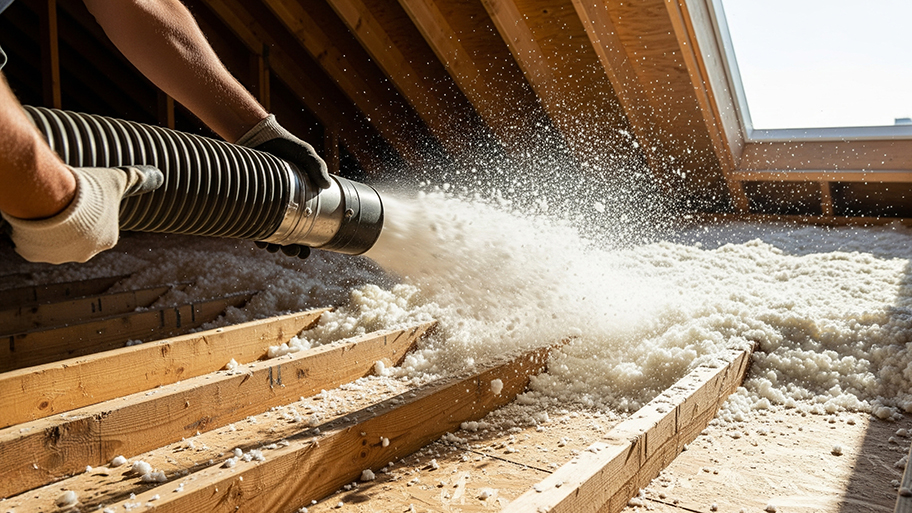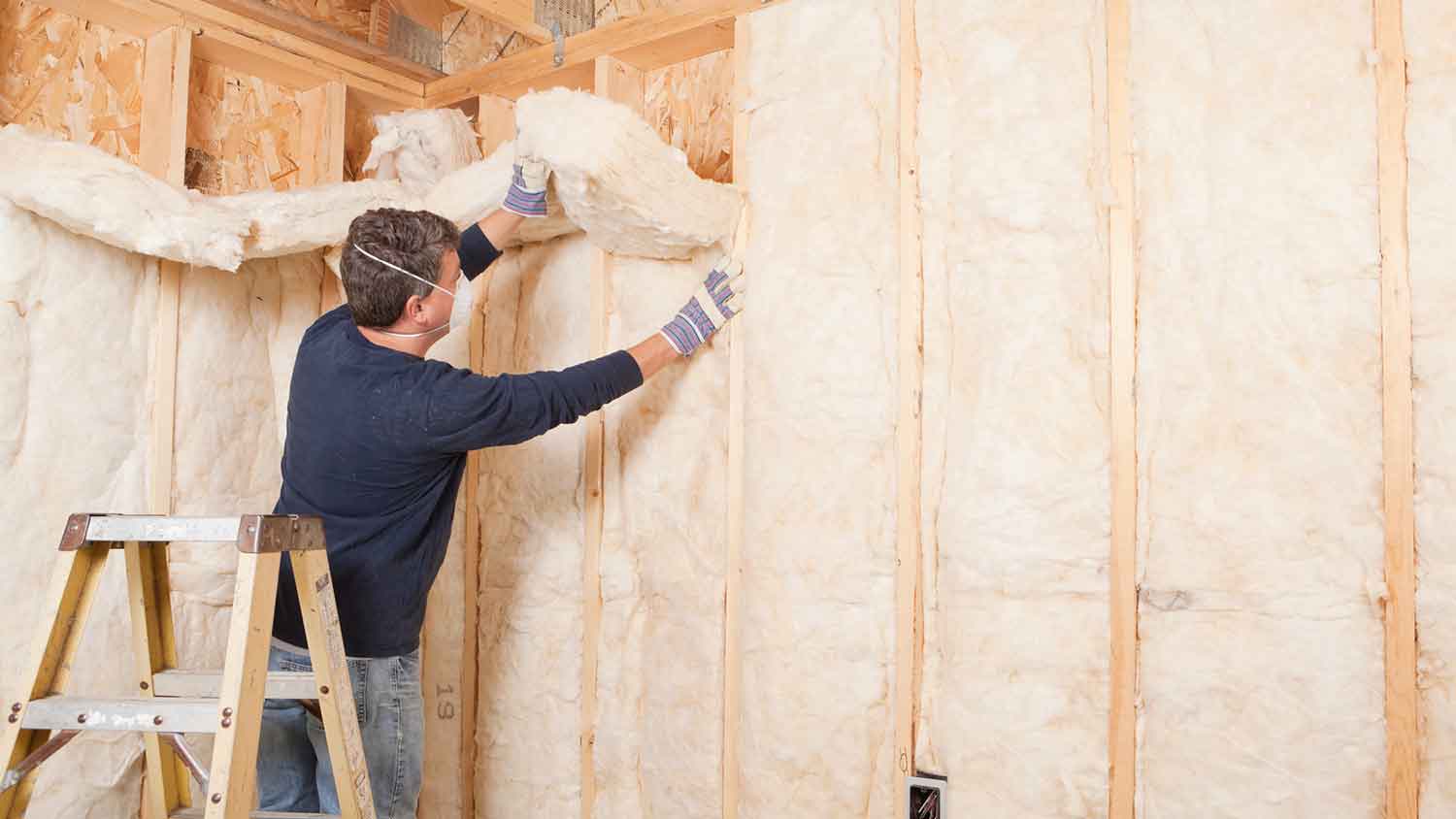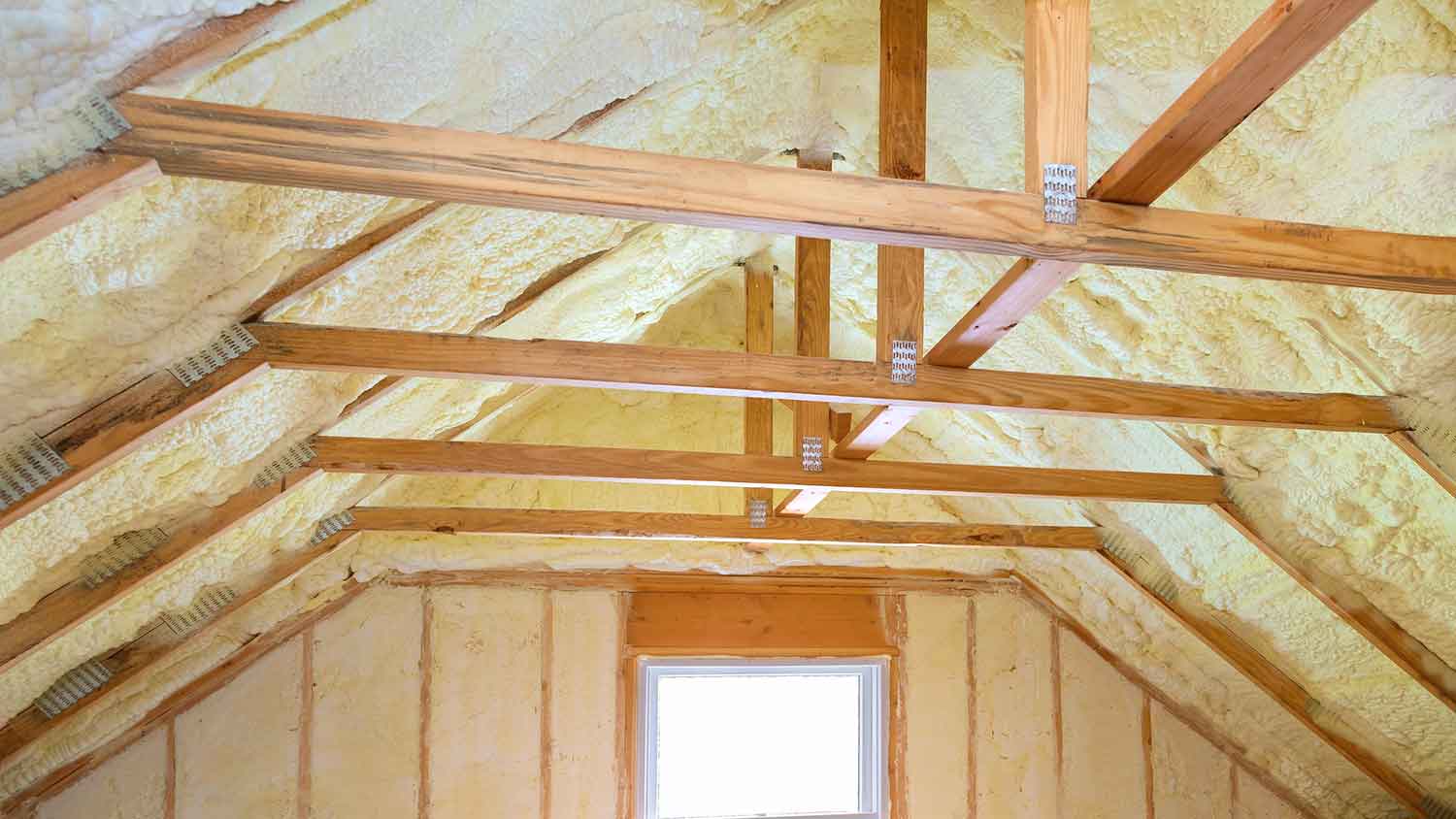
The cost of blown-in insulation costs varies depending on the type of insulation, labor, prep work, and more. Learn more about the cost factors in this guide.
Insulation saves homeowners an average of 15% on heating and cooling costs


Insulation slows the transfer of heat in and out of your home.
When properly installed, insulation can reduce heating and cooling costs by 15%, on average.
Homes in the north particularly benefit from insulation, but southerners can also reduce cooling costs with better insulation.
Prioritize insulating your attic, exterior walls, and floors above unconditioned spaces.
You can further reduce energy consumption by sealing air leaks, updating your HVAC, and installing energy-efficient appliances.
Electric and natural gas bills can take a huge bite out of your monthly budget, especially in the hot summer months and freezing winter months. In fact, the Department of Energy reports that heating and cooling costs specifically represent up to 70% of Americans’ total home energy consumption (the rest comes from things like appliances and light fixtures).
If you’re overwhelmed by your monthly utility bills or are simply always shivering in the winter and sweating in the summer, there are a number of steps you can take to make your home more energy efficient, including adding insulation throughout your home.
But how much does insulation save on energy bills? Let’s dive in.
Insulation is a type of barrier installed in floors, walls, and ceilings to impede heat flow in and out of your house. In the winter, it helps to trap heat inside your home; in the summer, it stops heat from entering your home.
There are several types of insulation to choose from (and several places you can choose to install it). The most common insulation types include fiberglass batts, blown-in insulation, spray foam insulation, and radiant barrier insulation.
Knowing which type of insulation your home needs—and where it should be installed—can be challenging without a home energy audit. If you’re ready to install insulation to reduce your energy bills but don’t know where to start, we recommend contacting a home energy auditor near you; they’ll know the specific needs of your climate and your home.

We know that insulation slows the transfer of heat in and out of your home, but how exactly does it work?
Heat transfers out of (or into) your home via three processes:
Convection: Heat transfer through a liquid or gas.
Conduction: Heat transfer directly from one object to another.
Radiation: Heat transfer through electromagnetic waves.
It’s the insulation’s job to slow the heat transfer of these three processes by creating a resistant barrier. The more effective the insulation is at slowing heat transfer, the higher its corresponding R-value (and the more expensive it is). Effectiveness depends on the type of insulation, how thick it is, and how dense it is.
Convection is the heat transfer method you’re probably most familiar with if you’ve heard “heat always rises.” It’s also the easiest to imagine: In the winter, your home’s heating system pumps out heat, but it eventually moves upward toward your attic and escapes through the roof—and cold air takes its place in the living space. The movement of the air even creates an unpleasant cold draft in your home. Installing attic insulation is the best way to combat convective heat loss.
But our homes also lose heat (or let in heat) through conduction. The exterior walls are in direct contact with the air outside, meaning installing wall insulation is crucial to slowing that conductive heat transfer with the external, untreated air.
Similarly, radiant barriers, typically installed in attics, can reduce heat gain in the summer by reflecting radiant heat out of the home, rather than absorbing it into the home.
On average, insulation saves homeowners 15% on their heating and cooling costs, according to the U.S. Environmental Protection Agency’s Energy Star program.
The amount that properly installed insulation saves you depends on where you live. Colder climates benefit more from insulation, especially in the winter. But even homeowners in states like Florida and Texas should consider insulation to slow heat transfer into their homes in hot summer months.
Homeowners in northern states such as Alaska, Montana, North Dakota, and Wisconsin see the greatest savings (18% to 19% reduction in energy bills).
States down the middle of the U.S., from east to west—including Nevada, Colorado, Indiana, Ohio, Kentucky, and Virginia—are close behind with 16% to 17% in annual savings.
States like Texas, Florida, Mississippi, Alabama, and Arizona can expect a 7% to 14% reduction in energy bills after installing insulation.
To get the most savings out of your insulation, choose a high-quality material suited for your home and climate, and ensure it’s properly installed by hiring a local insulation company.
The best way to know if your home needs better insulation—and where it should be installed—is through a home energy audit. That said, there are other signs you can watch for that might indicate you need insulation, including:
Cold walls, ceilings, and floors: If you can’t walk across hardwood floors without socks because they’re too cold, or you can touch your hand to an exterior wall and feel the cold against your hand, your home is probably under-insulated.
Frozen pipes: If it’s cold enough for the pipes in your home to freeze, you likely need better insulation. In fact, the pipes themselves should be insulated—and that’s a task you can handle on your own. Here’s how to insulate pipes ahead of winter.
Different temperatures: The goal of your HVAC system is to heat your home evenly. But if some rooms are much colder or warmer than others, that’s a good sign there’s an air leak somewhere that’s letting hot air out in the winter and cold air in the summer.
Rodents and bugs in your home: Your home is a safe haven from the elements in both the summer and winter—and not just for your family. If you notice mice moving in during the winter months, for instance, you’ve got multiple problems. First, you’ve got to get rid of the mice, which can be challenging and expensive. But more importantly, you’ve got to figure out where they’re getting in—because if rodents and large bugs are able to transfer in and out of your home, so can heat.
Drafts: Cold air drafts throughout your home are a sign that your home could use better insulation. It may also mean that you need to better seal windows and door frames and that you could benefit from storm windows if you don’t already have them.
High energy bills: And, of course, the issue that likely brought you here—high energy bills in the summer and winter months. If your bills are on the rise without a major change in the price of electricity or natural gas where you live, then your energy consumption has gone up, possibly because your home has become less efficient. Insulation could play a big part in that.

A home energy audit will also help you understand where in your home you need to install better insulation. The ideal spots to prioritize will vary from home to home, but in general, we recommend:
Focusing on the attic first: Most heat loss happens through the attic. Attic insulation costs an average of $2,500, but it can bring you savings on your energy bills—and more comfort in your home—quickly. Get quotes from multiple attic insulation companies; contractors will even be able to recommend the best type of insulation for your attic.
Moving to the walls next: Insulating exterior walls is more important than interior walls, as it helps with heat transfer through conduction.
Insulating the floor for maximum comfort: Insulating your floor above unconditioned spaces, like basements, crawl spaces, and garages, can also minimize heat transfer. You can even insulate your basement for maximum energy savings; here’s how to insulate a concrete floor.
According to Angi data, nearly 44% of homeowners report installing batt and roll insulation in their attics. Other common insulation locations include inside walls and ceilings. Check out the most common places to install batt and roll insulation:
Installing insulation isn’t the only way to lower your energy bills. Instead, it’s one part of a comprehensive home efficiency plan. Other ways to reduce your energy bills include:
Sealing your home through caulking and weather stripping
Updating your aging HVAC system
Installing energy-efficient appliances and lighting
Getting a smart thermostat to better manage energy consumption
From average costs to expert advice, get all the answers you need to get your job done.

The cost of blown-in insulation costs varies depending on the type of insulation, labor, prep work, and more. Learn more about the cost factors in this guide.

Discover roof insulation costs, including average prices, key cost factors, and expert tips to help you budget and save on your next project.

Trying to calculate how much spray foam insulation costs? Our in-depth guide breaks down pricing by type, amount, and where you install it.

Crawl spaces are more than a small, uninhabitable space beneath your home. Learn how insulating your crawl space can make the area useful.

What is a radiant barrier? This reflective building material is designed to reduce heat transfer and save you money on energy costs.

EPS versus XPS insulation—if you're going the foam board insulation route, which one is right for you? Learn the difference and how to choose.